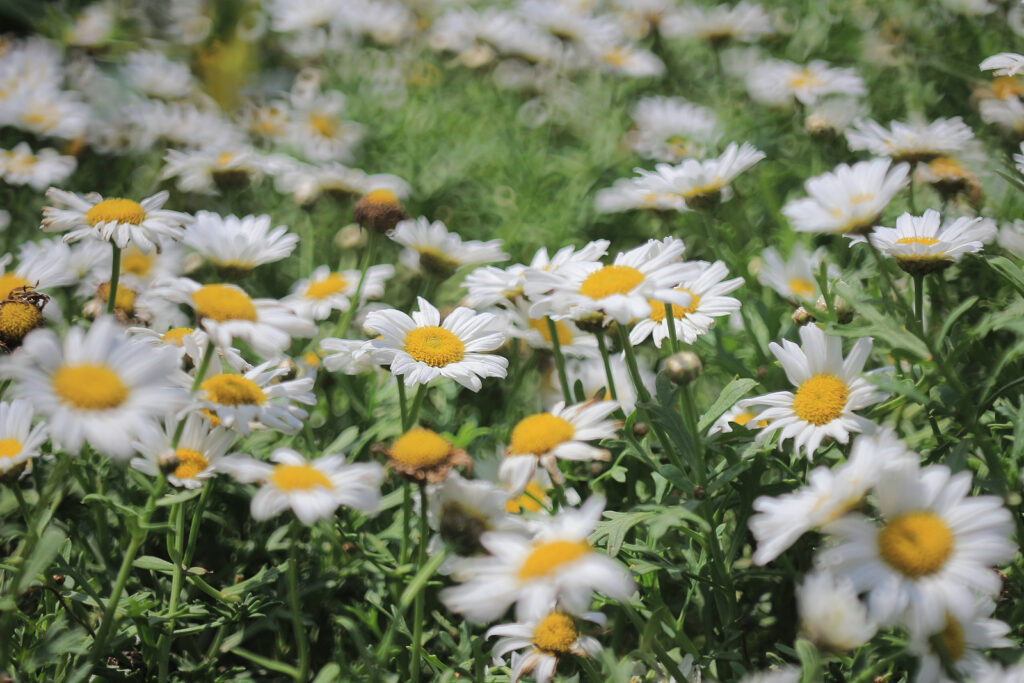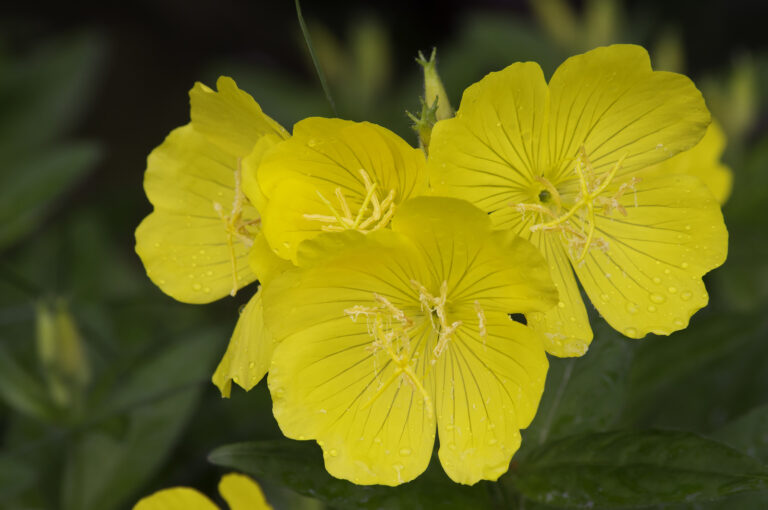How to Grow Shasta Daisy — Leucanthemum
Leucanthemum is a genus of annuals and perennials that bear daisy-like flowers. The genus includes Shasta daisies and the commonly grown bedding plant Leucanthemum paludosum widely known as Chrysanthemum paludosum and also oxeye daisies
Shasta Daisy, Leucanthemum x superbum, is an upright perennial with large white, or sometimes yellow, daisy-like flowers that appear from mid-summer to fall. Shasta daisies are often used in beds and borders.
Leucanthemum paludosum widely known as Chrysanthemum paludosum is a low-growing and spreading summer-blooming annual that grows to 4 inches (10cm) tall. It nearly forms a mat of white daisy flowers and is often used in beds and containers.
Garden Success Products at Amazon:
- 10 pcs Stainless Steel Garden Hand Tool Set
- Flexi Hose with 8-inch Nozzle
- Gorilla Cart 4 Cu. Ft, 300-pound Capacity
- Neem Bliss 100-% Cold Pressed Neem Oil
- Safer Brand Insect Killing Soap
- Wildflower Seed Mix Attracts Hummingbirds and Butterflies
- Eden Brothers All Perennial Seed Mix
Oxeye daisy, Leucanthemum vulgare, is often naturalized in wildflower gardens and meadows. It can grow to 3 feet (.9m) tall and bears 1 to 2-inch wide white daisies with yellow centers.
Nearly all Leucanthemums have deeply lobed and toothed. or scalloped leaves. Flowers are solitary at stem tips. White ray florets, or petals, surround yellow centers of densely packed disk florets.

Get to know Leucanthemum
- Plant type: Annuals and perennials
- Growing Zones and range: Zones 4 to 9
- Hardiness: Hardy
- Height and width: 4 to 36 inches (10-91cm) tall and wide depending on species; some are ground-hugging, others grow tall and wide
- Flowers: White daisy-like flowers; white ray florets or petals surround yellow centers consisting of densll=y packed disk florets
- Bloom time: Early summer until frost
- Uses: cut flower, cottage garden, mixed border, deer resistant
- Garden companions: delphiniums, veronica
- Common name: Shasta daisy, oxeye daisy, Chrysanthemum paludosum
- Botanical name: Leucanthemum specifies and hybrids
- Family: Asteraceae
- Origin: Meadows and grasslands in Europe and temperate Asia
Where to plant Leucanthemum
- Grow Leucanthemumin in full sun in most regions; grow in partial shade in hot, dry regions of Zones 8-9.
- Plant Leucanthemum in humus-rich, well-drained soil, neutral to alkaline pH.

When to plant Leucanthemum
- Set Leucanthemum in the garden in spring after all danger of frost has passed.
Planting and spacing Leucanthemum
- Space Leucanthemum 1 to 2 feet apart.
How to water and feed Leucanthemum
- Give Leucanthemum moderate water; keep the soil evenly moist.
- Fertilize Leucanthemum with an all-purpose fertilizer every 6 weeks or work a 9-month, slow-release fertilizer into the soil in early spring.
Leucanthemum care
- Mulch around Leucanthemum to conserve soil moisture.
- Stake taller cultivars so they do not flop over.
- Remove spent blooms to prolong flowering.
- Mulch to protect plants in winter in Zones 4-5. The plant dies in winter if the soil is too wet.

Leucanthemum propagation
- Leucanthemum can be propagated from seed or cuttings, or by division.
- Take divisions in autumn or early spring (divide established clumps every 2 or 3 years).
- Sow seeds in individual pots or trays 8 to 10 weeks before the average last frost date. Gently press the seeds into the soil but do not cover them. Germination will occur in two to three weeks at 70°F.
Leucanthemum varieties to grow
- Leucanthemum paludosum, formerly Chrysanthemum paludosum: bushy, spreading 2 to 4 inch (5-10cm) tall annual; bears masses of 1-inch wide daisylike flower with white petals and yellow centers in summer; cool-weather annual.
- L. x superbum, Shasta daisy, formerly Chrysanthemum maximum: clump-forming hybrid 1 to 4 feet tall, spreads to 2 feet wide; bears single, double, semidouble, or double 2 to 5 inch wide white daisies on stiff stems; cultivars include ‘Becky is a heat-tolerant cultivar with a long bloom period; ‘Alaska’ has white flowers and grows to 20 inches tall; ‘Lady’ grows just 6 to 8 inches tall and bloom early; ‘Polaris’ grows to 3 feet tall.
- L. vulgare, Oxeye daisy, formerly Chrysanthemum leucanthemum: grows 1 to 3 feet tall; bears 1 to 2-inch wide white daisies with yellow centers.
Leucanthemum frequently asked questions
Q: What growing conditions do Leucanthemum like?
A: Leucanthemum is largely undemanding, growing well in full sun in moderately fertile, moist but well-drained soil.
Q: How do I propagate Leucanthemum?
A: Leucanthemum can be propagated from seed or cuttings, or by division. Take divisions in autumn or early spring (divide established clumps every 2 or 3 years). Sow seeds in individual pots or trays 8 to 10 weeks before the average last frost date. Gently press the seeds into the soil but do not cover them. Germination will occur in two to three weeks at 70°F.
Related Articles:







